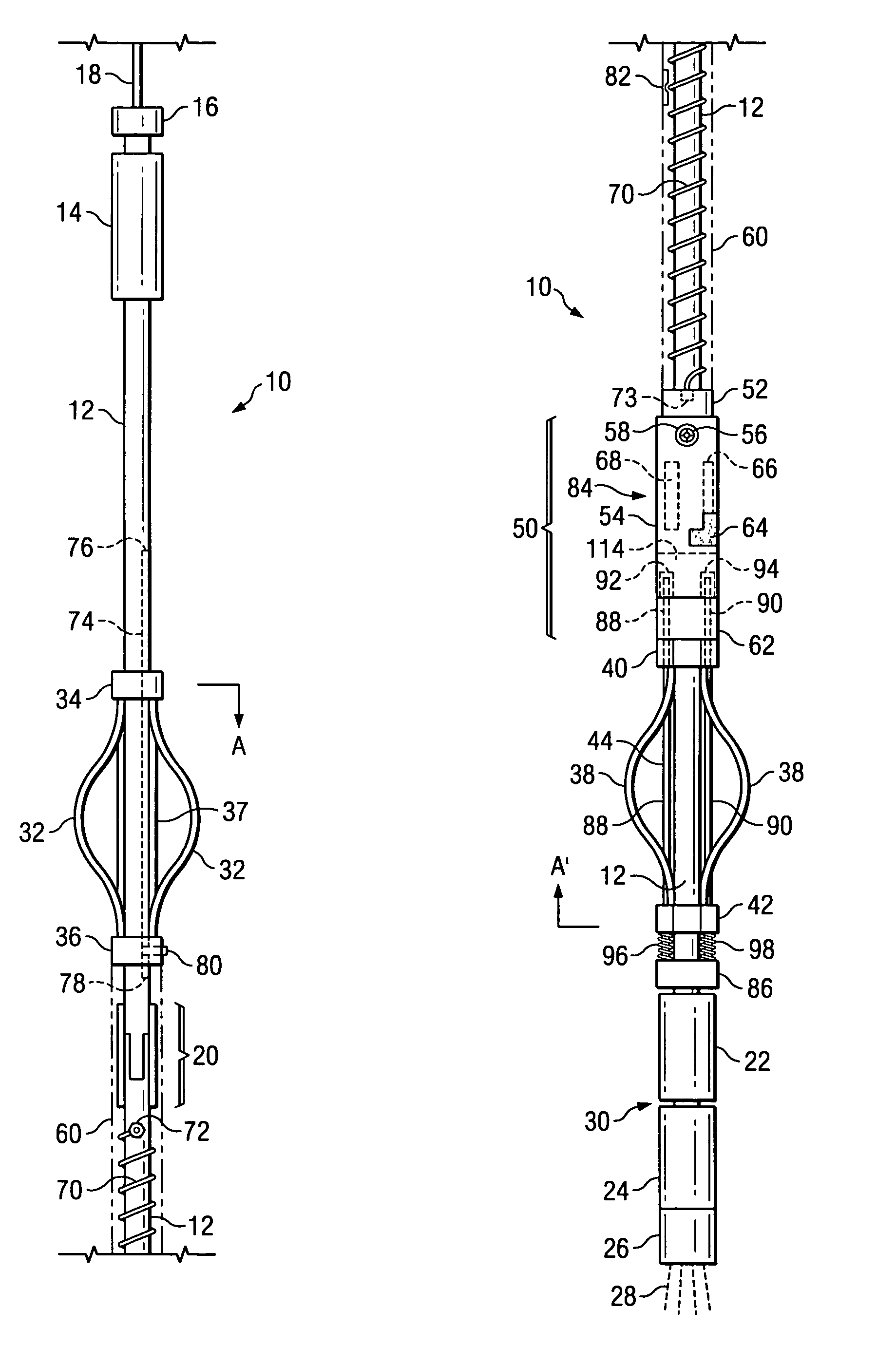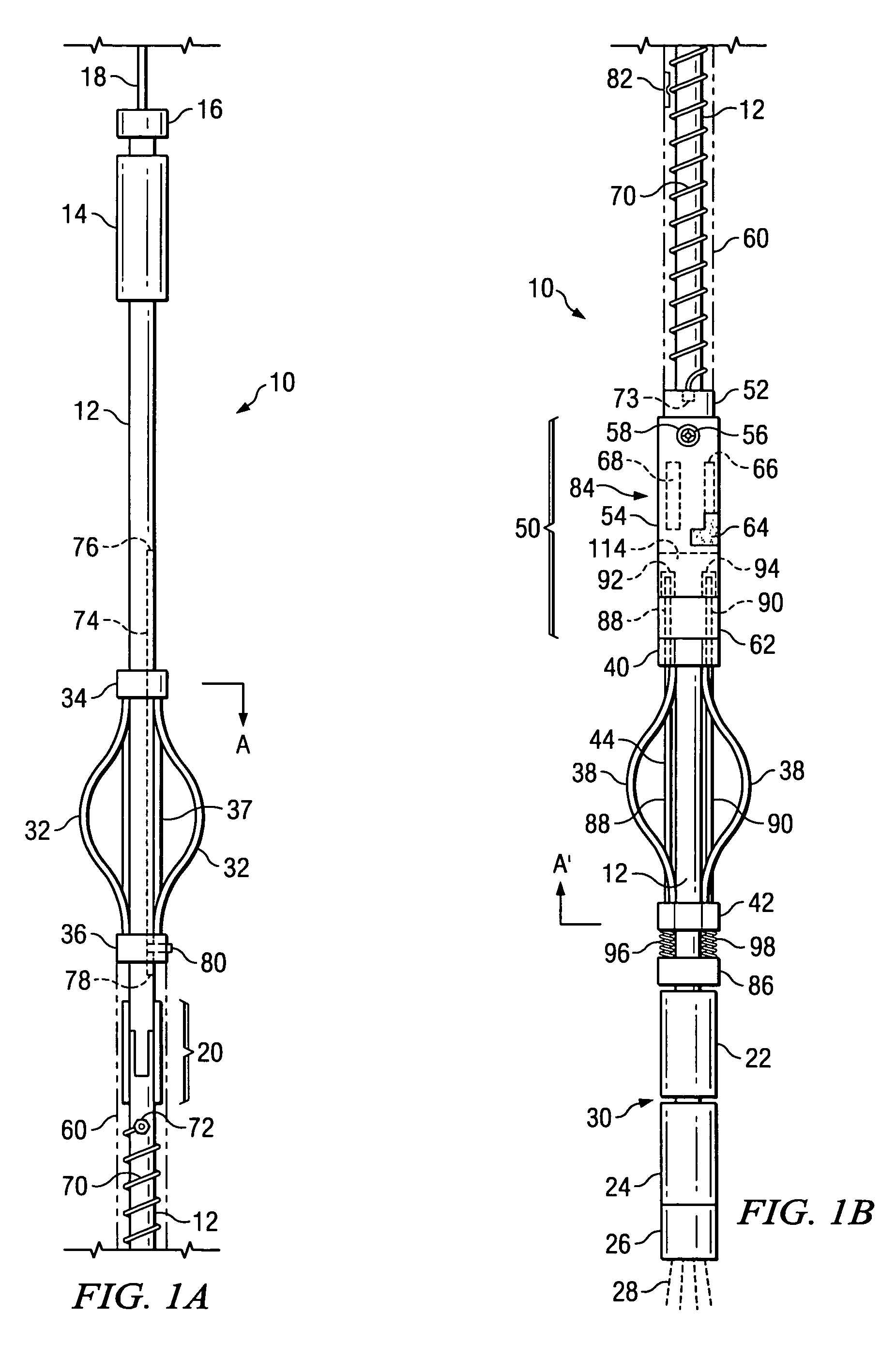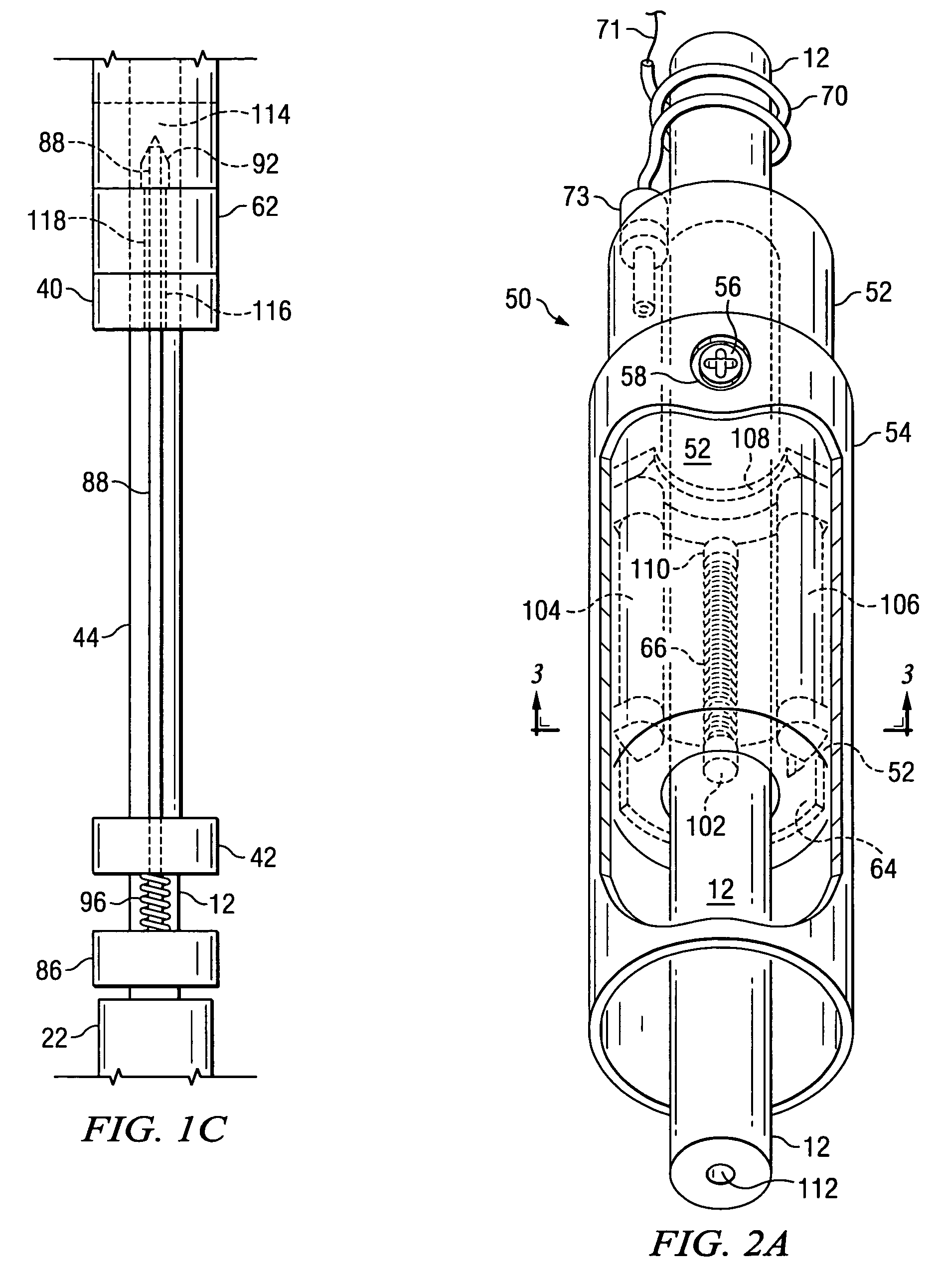Free point tool with low mass sensor
a free point tool and sensor technology, applied in the field of downhole tools, can solve the problems of easy passing down the well casing of the tool, the string of drilling is often stuck in the well, and the free point tool is complex device that must be operated, and achieves the effects of simple construction, superior sensitivity and linearity, and light weigh
- Summary
- Abstract
- Description
- Claims
- Application Information
AI Technical Summary
Benefits of technology
Problems solved by technology
Method used
Image
Examples
Embodiment Construction
[0052]Referring to FIG. 1A, there is illustrated a first, upper portion of one embodiment of a free point tool according to the present invention. FIG. 1B illustrates a second, lower portion of the embodiment of FIG. 1A. The description of the structures shown in FIGS. 1A and 1B, described together as a single FIGURE, will also serve as an overview of the illustrated embodiment. Further details of both the structure and operation will become clear as the description proceeds to the remaining figures. It will further be appreciated that the orientation of a free point tool, as typical of down hole tools employed in well drilling operations, is to be suspended by a wire line in the well casing, usually below the surface of the earth. In the description which follows, the term “surface” will be taken to mean the surface of the earth and, occasionally, the apparatus and other equipment or personnel associated with the operation of the free point tool.
[0053]The free point tool 10 illustr...
PUM
 Login to View More
Login to View More Abstract
Description
Claims
Application Information
 Login to View More
Login to View More - R&D
- Intellectual Property
- Life Sciences
- Materials
- Tech Scout
- Unparalleled Data Quality
- Higher Quality Content
- 60% Fewer Hallucinations
Browse by: Latest US Patents, China's latest patents, Technical Efficacy Thesaurus, Application Domain, Technology Topic, Popular Technical Reports.
© 2025 PatSnap. All rights reserved.Legal|Privacy policy|Modern Slavery Act Transparency Statement|Sitemap|About US| Contact US: help@patsnap.com



